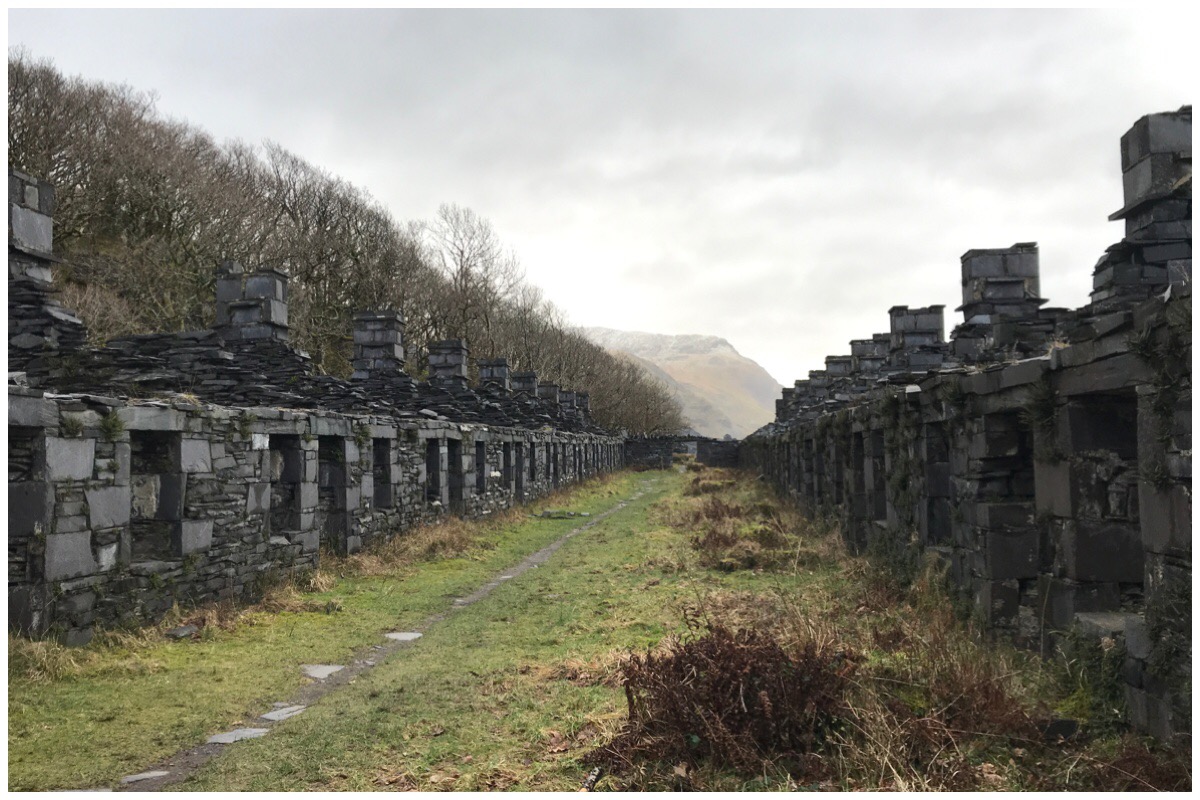
On February 1st, I attended a meeting at the Amgueddfa Lechi (Slate Museum) in Llanberis to discuss making the Welsh Slate industry a World Heritage Site. The bid is being put forward by Gwynedd Council and has been in progress since 2010. They’re only now bringing the details out to public and it’s time to generate some interest. So with that in mind, let me tell you more…
What is a World Heritage Site?
A World Heritage Site is a UNESCO protected site. It is awarded to those sites that UNESCO believe to be of historical or cultural importance to mankind. A site might have been important during a war, a revolution, or simply because of it’s stunning natural landscape. Examples of such places are the Tak Mahal, Great Wall of China, and the Pyramids.
Why should the Welsh Slate Industry be a WHS?

Welsh Slate Industry has played a massive part of the history here in Snowdonia. In the mid 19th century, the slate industry here in Wales was the world greatest exporter of slate. According to records from 1882, Welsh slate was exported as far as the West Indies, Argentina, South Africa and Australia.
It wasn’t just the slate that was exported worldwide. Technological advances were exported. Many of the engineering accomplishments influenced other feats for example the Darjeeling Railway is based very closely on the Ffestiniog Railway. Further evidence of this is that when the Welsh Highland line was reopened, trains were imported from South Africa I believe. (Although don’t quote me on that as I might be wrong).
Some other interesting facts:
- by the end of the 19th century, output from the Gwynedd slate mines was enough to roof around 14m terraced houses
- workers from North Wales travelled worldwide to open slate quarries as we were considered experts in mining.
What is the benefits of making the Welsh Slate Industry a WHS?
According to the studies made by Gwynedd Council and the partners of this bid, there will be significant benefits for the local area as a result of this bid. I’ll break them down into the three areas:
- Economic Benefits
No doubt there will be economic benefits from this WHS bid. The area is very much dependant on tourism be it those who like walking (plenty of mountains Gandalf) or thrill seekers (zipwires, potholing, underground trampolines). There’s already a WHS here in North Wales – Edward’s Castles here in Gwynedd has been included on the WHS list. So to have two WHS here in North Wales can only be good.It is estimated that tourism will boost and Gwynedd Council estimate that monies in from tourism will increase from £515m to £850m over the next 15 years. - Social Benefits
The boost in tourism will lead to increased jobs in the area. It is estimated that the number of jobs linked to the industry will almost double in the next 15 years. Increased jobs means less unemployment, less poverty and so increase in social wellbeing. The Blaenavon area was recognised as a WHS and the whole town benefited. - Cultural Benefits
Statistics provided by Gwynedd Council state that 70% of the population of the slate valleys here in Gwynedd speak Welsh. The Welsh slate industry has been an integral part in the development and strengthening of the Welsh language. It is hoped that by protecting the heritage of the slate industry, the Welsh language will also be protected.In addition, by promoting and celebrating the Welsh slate industry, it will re-connect people communities with heritage and conserve the culture.
What areas will be covered in the WHS bid?

There are six areas in Gwynedd which have been earmarked for this bid. These areas represent the technology, organisation, social and environmental impacts of the Welsh slate industry on the North Wales landscape. Those six areas are:
- Penrhyn Slate Quarry, Bethesda and Ogwen Valley to Porth Penrhyn
- Dinorwig Slate Quarry Mountain Landscape
- Nantlle Valley Slate Landscape
- Gorseddau and Prince of Wales Slate Quarries, Railways and Mill
- Blaenau Ffestiniog, Y Dwyryd and the Rheilffordd Ffestiniog
- Bryneglwys, Abergynolwyn and Talyllyn Railway
(Updated July 2021 – originally Aberllefenni was earmarked but has since changed it would appear).
Timescale of the Bid
As mentioned, this has been in progress since 2010 and is now being discussed in the public domain. Full nomination will be put in front of the DCMS in September 2018, presentation of the nomination to UNESCO in January 2019 with a decision being made by UNESCO in July 2020.
Now’s the time to generate the buzz and get people excited by the bid. Raise awareness, and make everyone proud of the industry and the landscape it’s created. I can’t tell you how excited I am by this. Sitting in that meeting I could feel my heart burst with pride. I find this project to be really exciting and I hope that I can share my excitement with you.
Are you excited by this? Have you ever visited the old slate mines in Snowdonia?
(I would like to thank Gwynedd Council for the holding this meeting and for putting forward this proposal. Also, thank you to Llechi Cymru a Welsh Slate Ltd for providing the information used in this post. If you find anything incorrect please get in touch!)
























































Oh wow I have been here , I found it really educational and is in such a great area. I hope you are successful!!!
Hi Rebecca,
Do you have any further information on this?? September 2018 is rapidly approaching and I have been unable to find any indication elsewhere of the sort of work which is necessary to prepare a “Nomination File” and “Management Plan” having actually taken place. It is likely to have to include the use of Consultants etc etc.
I am one of a number of “World Heritage Travellers” who are particularly interested in matters concerning existing and upcoming “World Heritage sites and we try to keep a “diary” of ones which may be nominated in future years in order to help our Community plan their travels.
You might be interested in my review of a visit to the site in October 2017 (scroll down to “Solivagant”)
https://www.worldheritagesite.org/tentative/id/5678